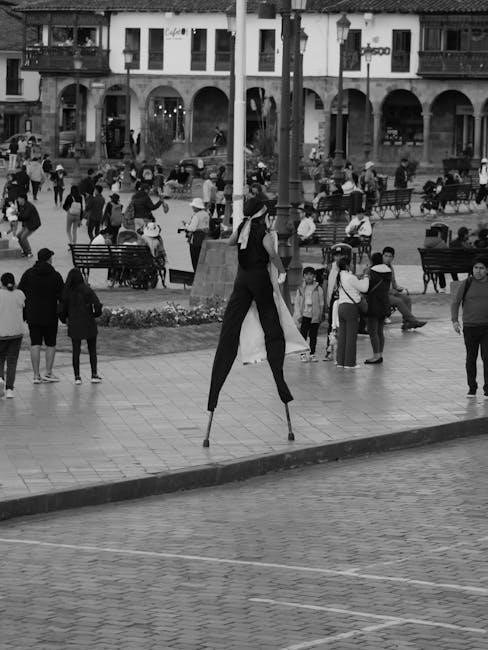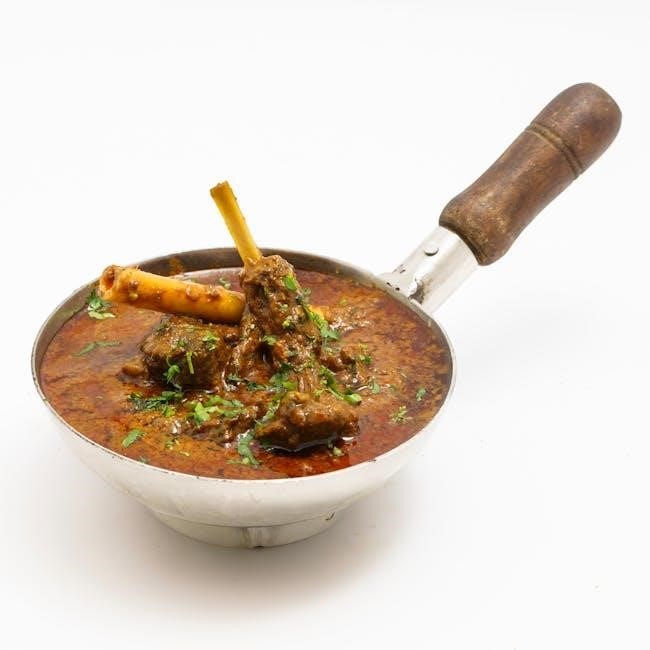Hand gestures are a universal language, offering insights into emotions, intentions, and cultural identity. A practical guide reveals how open palms signify sincerity and approachability, while varying cultural contexts and spiritual practices, like mudras, add layers of meaning. Understanding these nuances is crucial for effective communication and fostering connections across diverse backgrounds.
Overview of Non-Verbal Communication
Non-verbal communication is a fundamental aspect of human interaction, conveying emotions, intentions, and attitudes without words. It encompasses body language, facial expressions, and hand gestures, which collectively reveal more about a person’s true feelings than speech alone. Hand gestures, in particular, play a significant role in expressing sincerity, confidence, or deceit. Open palm gestures, for instance, often signal honesty and approachability, while clenched fists may indicate tension or aggression. Understanding these cues is essential for interpreting underlying messages and avoiding misunderstandings. Cultural differences further complicate non-verbal signals, as gestures can carry vastly different meanings across societies. Resources like the “signification gestuelle des mains pdf” provide insights into decoding these signals, emphasizing the importance of awareness in fostering effective communication. By mastering non-verbal cues, individuals can navigate social and professional interactions with greater empathy and precision.
The Importance of Hand Gestures in Human Interaction
Hand gestures are a powerful tool in human interaction, enhancing communication and conveying emotions effectively. They can signal sincerity, confidence, or even deception, making them indispensable in both personal and professional settings. Open palm gestures, for example, often denote honesty and openness, while specific finger placements, like those in yoga mudras, carry spiritual significance. The ability to interpret these gestures allows individuals to better understand others’ intentions and build stronger connections. Resources such as the “signification gestuelle des mains pdf” highlight the diversity of hand gestures across cultures and contexts, emphasizing their role in avoiding misunderstandings. By studying these gestures, one can improve their communication skills and navigate complex social dynamics with greater ease and empathy. Ultimately, hand gestures are more than mere movements; they are a bridge that connects people across cultures and backgrounds.
Why Understanding Hand Gestures Matters
Understanding hand gestures is essential for effective communication and building meaningful connections. They convey emotions, intentions, and cultural values, often subconsciously influencing perceptions. A PDF guide on hand gesture significance reveals how open palms can build trust, while specific mudras hold spiritual power. Recognizing these cues helps avoid cultural misunderstandings and fosters empathy. In professional settings, gestures can signal confidence or deceit, impacting negotiations and relationships. By mastering this non-verbal language, individuals enhance their social interactions and personal growth. This knowledge bridges cultural gaps, enriching both personal and professional lives, making it a valuable skill in our diverse world.
Cultural Significance of Hand Gestures
Hand gestures vary widely across cultures, reflecting unique values and traditions. Understanding these differences is vital to avoid misinterpretations and foster cross-cultural understanding and respect in global interactions.
Global Variations in Hand Gesture Meanings
Hand gestures carry diverse meanings across cultures, highlighting the importance of understanding their significance in different contexts. For instance, the “okay” gesture, commonly viewed as positive in Western cultures, can be offensive in others. Similarly, the thumbs-up sign, widely seen as approval, may symbolize rudeness in certain Middle Eastern countries. These variations underscore the need to recognize cultural nuances to avoid miscommunication. In some cultures, specific hand gestures are deeply symbolic, reflecting values and traditions, while in others, they may be used more casually. The “signification gestuelle des mains pdf” emphasizes how gestures like open palms can convey sincerity in one culture but may signal vulnerability in another. This global diversity in hand gesture meanings reinforces the importance of cultural awareness in fostering understanding and respect in cross-cultural interactions.
Hand Gestures in Different Cultures
Hand gestures vary significantly across cultures, reflecting unique traditions and values. In many Asian cultures, joining palms in a prayer-like gesture signifies respect, while in Western societies, it may indicate gratitude or spirituality. The “signification gestuelle des mains pdf” highlights how gestures like waving can differ widely; in some cultures, it signals farewell, while in others, it may be used to summon someone. Similarly, pointing with the index finger is considered rude in certain societies, whereas it is a common gesture in others. These cultural differences emphasize the importance of understanding gesture meanings to navigate interactions effectively. By exploring these variations, individuals can enhance their communication skills and foster mutual respect in diverse settings. This awareness not only enriches personal connections but also promotes harmony in global interactions. Learning about these cultural nuances is essential for effective and meaningful communication across borders.
Cultural Misinterpretations of Hand Gestures
Cultural misinterpretations of hand gestures can lead to misunderstandings or offense, as meanings vary widely across societies. For instance, the “thumbs-up” gesture, commonly seen as a sign of approval in Western cultures, is considered offensive in some Middle Eastern countries. Similarly, placing hands on the hips can signal confidence in one culture but arrogance in another. The “signification gestuelle des mains pdf” underscores how gestures like waving or pointing can have vastly different connotations, leading to unintended offense. In Japan, avoiding direct eye contact and using subtle hand movements is a sign of respect, whereas in Western cultures, it may be perceived as shyness or lack of sincerity. These misinterpretations highlight the importance of cultural awareness in communication. By understanding these differences, individuals can avoid unintended conflicts and foster better cross-cultural interactions. This awareness is crucial in today’s globalized world, where misunderstandings can have significant consequences.

Psychological Aspects of Hand Gestures
Hand gestures reveal emotional states, intentions, and personality traits, offering insights into psychological processes. They convey sincerity, confidence, or deception, reflecting inner thoughts and feelings. Understanding these aspects enhances emotional intelligence.
Hand Gestures and Sincerity
Hand gestures play a significant role in conveying sincerity, as they often align with verbal communication to express genuine emotions. Open and relaxed hand movements, such as palms facing outward, are commonly associated with honesty and transparency. When gestures mirror spoken words, they reinforce trustworthiness, signaling alignment between intent and action. Conversely, incongruent or overly controlled gestures may suggest insincerity, as they can indicate discomfort or hidden motives. Psychological studies highlight that people subconsciously perceive hand gestures as cues to a person’s authenticity. For instance, gestures that are spontaneous and natural are more likely to be interpreted as sincere. Understanding the relationship between hand gestures and sincerity can enhance interpersonal trust and improve communication effectiveness. By being aware of these non-verbal cues, individuals can better navigate social interactions and build stronger connections.
Gestures of Confidence and Power
Hand gestures can significantly convey confidence and power, influencing how individuals are perceived in various social and professional settings. Expansive gestures, such as spreading arms or using sweeping motions, often signal self-assurance and authority. A firm handshake, combined with direct eye contact, is widely recognized as a gesture of confidence and reliability. Power gestures, like placing hands on hips or using controlled, deliberate movements, can project dominance and leadership. These gestures are frequently observed in public speaking and business environments, where they help establish credibility and command attention. Psychologically, individuals who use confident gestures are often perceived as more competent and trustworthy. However, overusing or exaggerated gestures can undermine authenticity, so balance is key. Mastering these gestures can empower individuals to communicate their strength and self-belief effectively, fostering positive impressions in personal and professional interactions.
Detecting Lies Through Hand Movements
Detecting lies through hand movements involves analyzing subtle gestures that often betray deception. Individuals lying may exhibit nervous behaviors, such as fidgeting, handwashing motions, or excessive palm sweating. Avoiding eye contact while speaking, coupled with hand gestures that contradict verbal statements, can signal dishonesty. Closed-off gestures, like crossing arms or hiding hands, may indicate discomfort or concealment. Touching the face, particularly the mouth or nose, is another common sign of deception, as it reflects subconscious discomfort. Additionally, liars may display micro-gestures, such as fleeting hand movements, that reveal their true emotions. These non-verbal cues can help identify inconsistencies between words and actions, aiding in detecting falsehoods. By paying attention to these hand movements, one can better assess the sincerity of others in various interactions.

Spiritual and Symbolic Meanings of Hand Gestures
Hand gestures carry profound spiritual and symbolic meanings, often representing divine connections, healing, and blessings across various faiths and traditions, evoking balance and harmony in spiritual practices.
Hand Mudras in Yoga and Meditation
Hand mudras are ancient yogic practices that harness the body’s energy through specific hand postures. These gestures, deeply rooted in Hindu, Buddhist, and Ayurvedic traditions, are believed to balance the body’s vital energy, or prana. Each mudra directs the flow of life force, enhancing physical, mental, and spiritual well-being. For instance, the Gyan Mudra (seal of knowledge) is formed by touching the thumb and index finger, symbolizing wisdom and clarity. The Prana Mudra (life gesture) activates the body’s energy, fostering vitality. These postures are often used in meditation to channel emotions, calm the mind, and connect with higher consciousness. The signification gestuelle des mains pdf highlights how mudras create harmony by balancing the five elements within the body. Regular practice is said to improve health, focus, and inner peace, making mudras a powerful tool in holistic well-being.
Symbolic Hand Gestures in Religion
Hand gestures hold profound symbolic meanings across various religious traditions. In Christianity, the sign of the cross is a universal gesture representing faith and protection, while priests use specific hand movements to bless congregations. In Hinduism, intricate mudras are used during puja, symbolizing offerings to deities and spiritual connection. Buddhism features iconic hand postures in statues of Buddha, each conveying different aspects of his teachings, such as meditation or compassion. In Islam, certain hand gestures during prayers and rituals signify humility and devotion. These gestures often serve as silent prayers or expressions of reverence, bridging the physical and spiritual realms. The ‘signification gestuelle des mains pdf’ emphasizes how these gestures transcend language barriers, uniting believers in shared spiritual practices and reinforcing religious identity. Understanding them deepens appreciation for the rich tapestry of religious expression.

Buddhist Hand Gestures and Their Significance

In Buddhism, hand gestures, known as mudras, are deeply symbolic and integral to spiritual practices. The most iconic is the “Dhyani Mudra,” where hands rest in meditation, symbolizing inner peace and enlightenment. Another common gesture is the “Varada Mudra,” extending compassion and fearlessness. The “Vitarka Mudra” represents teaching and wisdom, often depicted in Buddha statues engaging disciples. These gestures are not merely symbolic but are used in rituals and meditation to channel spiritual energy. The “signification gestuelle des mains pdf” highlights how mudras embody Buddhist philosophy, bridging the physical and metaphysical. Practitioners believe these gestures aid in focusing the mind and connecting with divine truths. They are also used to honor the Buddha and his teachings, reinforcing devotion and mindfulness. By mastering these gestures, Buddhists aim to embody the teachings of the Buddha and attain a deeper understanding of their spiritual journey.

Hand Gestures in Spiritual Healing Practices
Hand gestures play a vital role in spiritual healing practices, serving as tools to channel and balance energy. In traditions like Reiki, practitioners use specific hand positions to transfer healing energy to the body. These gestures are believed to harmonize the flow of life force, promoting physical and emotional well-being. Similarly, in qigong and tai chi, hand movements are used to cultivate and direct “qi,” or vital energy, to restore equilibrium. The “signification gestuelle des mains pdf” explores how these practices rely on intentional hand placements to connect with the body’s energy centers. By using gestures such as the “Gassho” (palms together in gratitude) or the “Sekhmet” (hand on the heart), healers aim to create a sacred space for transformation. These gestures are not just physical acts but deeply spiritual, embodying the practitioner’s intent to heal and uplift. They bridge the spiritual and physical realms, fostering holistic wellness.

Practical Applications of Hand Gesture Knowledge

Understanding hand gestures enhances communication, public speaking, and professional interactions. The “signification gestuelle des mains pdf” provides insights, aiding educators and therapists in using gestures effectively.
Improving Communication Skills
Hand gestures play a crucial role in enhancing communication by adding depth and clarity to verbal messages. The “signification gestuelle des mains pdf” highlights how intentional gestures can convey emotions, emphasize key points, and engage audiences. By understanding the meaning behind different hand movements, individuals can align their body language with their speech, fostering better understanding and connection. This alignment is particularly useful in cross-cultural interactions, where gestures may carry specific meanings. For instance, open palm gestures often signify honesty, while clenched fists may indicate determination or tension. Incorporating mindful hand gestures can also boost confidence, as they help speakers express themselves more dynamically. Moreover, being aware of cultural variations in gesture interpretations ensures that messages are conveyed respectfully and accurately. Thus, mastering hand gestures becomes a powerful tool for effective and empathetic communication in both personal and professional settings.
Using Hand Gestures in Public Speaking
Hand gestures are a powerful tool in public speaking, as they enhance engagement and convey confidence. The “signification gestuelle des mains pdf” emphasizes how gestures can add emphasis to key points, making speeches more dynamic and memorable. By using purposeful hand movements, speakers can guide the audience’s attention and illustrate complex ideas. For instance, expansive gestures can signify openness, while controlled movements may denote precision. Additionally, gestures help speakers connect emotionally with their audience, fostering a sense of rapport. However, cultural differences in gesture interpretations must be considered to avoid miscommunication. Practicing gestures in tandem with speech ensures they feel natural and authentic. When aligned with verbal content, hand gestures can transform a presentation from monotone to captivating, leaving a lasting impression on listeners. Thus, integrating mindful hand gestures is essential for impactful and persuasive public speaking.
Hand Gestures in Business Negotiations
Hand gestures play a pivotal role in business negotiations, as they convey confidence, intent, and professionalism. According to the “signification gestuelle des mains pdf,” strategic use of hand movements can signal authority and openness, fostering trust. Open palm gestures, for instance, often denote transparency and sincerity, while controlled hand motions can project calmness under pressure. However, excessive or aggressive gestures may signal dominance or defensiveness, potentially hindering collaboration. Cultural differences in gesture interpretation are crucial; what signifies agreement in one culture might offend in another. Mirroring the opponent’s gestures subtly can build rapport, while deliberate pauses in hand movements can emphasize key points. Mastering these non-verbal cues enhances persuasion and helps navigate negotiations effectively, ensuring alignment with both parties’ goals. Thus, hand gestures are not just accessories but vital tools in achieving successful business outcomes.
Modern Interpretations of Hand Gestures
Modern interpretations of hand gestures emphasize their evolution in meaning and role in contemporary communication. Digital platforms have redefined gestures, with emojis becoming a universal language in text-based interactions.

Hand Gestures in Digital Communication
Hand gestures have gained new dimensions in digital communication, transforming how people convey emotions and ideas online. Emojis, particularly hand-related ones like 👋, 👍, and 🙏, have become universal symbols, bridging language barriers. Video conferencing tools amplify the role of gestures in virtual meetings, where they can convey confidence or enthusiasm. However, digital platforms sometimes lack the nuance of in-person interactions, leading to misinterpretations. For instance, a dismissive hand wave might appear ambiguous on screen. Despite these challenges, hand gestures remain vital in digital communication, fostering connection and expression in a virtual world. Their evolution reflects the adaptability of non-verbal communication in modern times.
Emojis and Hand Gestures in Texting
Emojis have revolutionized texting by incorporating hand gestures as visual representations of emotions and intentions. Popular hand gesture emojis like 👋 (wave), 👍 (thumbs-up), and 🙏 (prayer hands) convey feelings such as farewell, approval, or gratitude instantly. These symbols bridge language gaps, making communication more universal. However, their meanings can vary across cultures, leading to potential misunderstandings. For instance, the 👌 (OK hand sign) is widely accepted, but its interpretation can differ. Despite this, emojis have become essential in digital interactions, enabling users to express themselves creatively. The constant evolution of emoji libraries reflects the growing importance of non-verbal cues in texting; By blending tradition and modernity, hand gesture emojis enhance the emotional depth of written communication, making it more engaging and expressive.
Hand Gestures in Modern Art and Performance
Hand gestures play a pivotal role in modern art and performance, serving as a dynamic medium for expression and storytelling. In contemporary dance, choreographers often use intricate hand movements to convey emotions and narratives, creating a visual language that transcends words. Similarly, in theater, actors employ hand gestures to add depth and nuance to their characters, making performances more engaging. Visual artists also incorporate hand gestures in their work, whether through paintings that depict symbolic hand poses or installations that use gesture as a central theme. In performance art, the artist’s own hand movements may become the focal point, blurring the line between the creator and the creation. Additionally, modern technology has introduced new dimensions, such as gesture-controlled art and digital performances where hand movements manipulate visuals and sounds. Overall, hand gestures continue to evolve as a powerful tool in artistic expression, bridging tradition and innovation.
Summarizing the Importance of Hand Gestures
Hand gestures are a vital component of non-verbal communication, conveying emotions, intentions, and ideas with precision. They bridge language barriers, enrich storytelling, and enhance interpersonal connections. Across cultures, gestures express universal emotions like gratitude, anger, or friendship, making them a shared human language. Their subconscious use reveals personality traits, confidence levels, and sincerity, influencing how others perceive us. Understanding hand gestures fosters empathy, improves relationships, and aids in navigating diverse social and professional environments. By mastering their meanings, individuals can communicate more effectively, avoid misunderstandings, and build stronger connections. Hand gestures are not just movements; they are powerful tools that shape interactions and leave lasting impressions.

Learning to interpret and use gestures thoughtfully can significantly enhance communication skills, fostering mutual understanding and respect in both personal and professional settings. This awareness empowers individuals to navigate cultural and social dynamics with greater ease and confidence.
Final Thoughts on Mastering Hand Gesture Significance
Mastering the significance of hand gestures is a valuable skill that enhances communication, fosters empathy, and strengthens interpersonal connections. By understanding the power of gestures, individuals can convey emotions, intentions, and ideas more effectively, transcending language barriers. This knowledge not only improves personal interactions but also elevates professional communication, making it a potent tool in negotiations, public speaking, and leadership. Cultural awareness of gestures is equally important, as it prevents misunderstandings and promotes respect in diverse settings. Ultimately, hand gestures are a universal language that, when harnessed thoughtfully, can deepen understanding and build bridges between people. Embracing this non-verbal art fosters a more connected and harmonious world.
